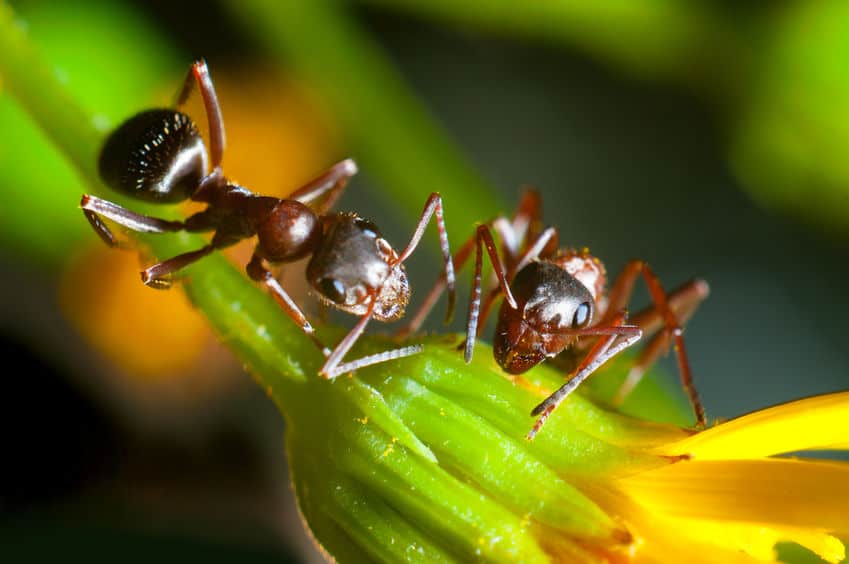Pavement ants, Tetramorium immigrans, are originally from Europe but since introduced into North America. They are also known as immigrant ants. They are small ants, only measuring about 0.3 cm in length.
How did the pavement ant get its name?
The pavement ant is so named because it can often be seen on and under pavements and sidewalks and has adapted very well to thrive in urban environments. As a result, it is not uncommon to see these ants emerging out from cracks in the pavement. They are believed to have been brought from Europe to America in the 1600s in soil used as ballast on ships.
Are pavement ants found in homes?
It is quite unusual to find these ants in homes. Other species of ants are more likely to be found in the home such as odorous house ants. Like all ants, they are opportunistic feeders and if a lucrative food source is located in a house near a nest site then they may enter the home.
Do pavement ants have big nests?
They choose to nest in urban areas under pavements and building foundations. Their nests are up to 35 inches (90 cm) deep and may have up to 10,000 workers. The entrance to their nests can be spotted by a telltale mound of excavated dirt. Ants can often be seen entering the holes although they are more active at night.
Do pavement ants have multiple queens?
Pavement ants may have multiple queens although a colony is always started by a single queen. The colony is completely dependent on the queen ant for its survival and the queen will be the principal egg layer for the entire colony.

Can pavement ants sting?
Pavement ants can sting. It is a very small stinger, however, and largely harmless to people. The stinger is also used to spread pheromones and create pheromone trails. (source) Like other ants species, they use these pheromones to communicate sources of food, establishing trails to make the movement of resources highly efficient.
Do pavement ants have wings?
Only select drones and new queens have wings. In late spring each year they fly to establish new colonies. The drones mate with the new queens in flight. After mating the drones having fulfilled their role will die. The queens once inseminated will establish a new colony and discard her wings. She will never fly again and her body consumes the muscles used to power the wings as an important source of protein.
What do pavement ants eat?
Pavement ants are very diverse in what they will eat. They like sweet foods such as honeydew and fruit juices and any sweet foods dropped by people. They also consume pollen which is a protein source. They will attack and consume other small insects. The ant larvae within the nest have a need for high protein foods. While often regarded as a nuisance they do help to clean up environments by removing decaying insects and food.
Have pavement ants really been to space?
Stanford university sponsored an experiment to send pavement ants to the International Space Station in 2014. The ants were enclosed in groups of 80 in transparent boxes. They studied the ant’s movements and search patterns. They hope to use the information to program robots. The scientists wanted to know how the ants reacted in zero gravity. Despite being disorientated and struggling at first the results found that they were able to explore even in such an unusual environment, although far less efficiently than they do on earth. They were able to cling to the walls and even get back to the wall if they floated away, sometimes they would float for up to 8 seconds. Their cooperative behavior could be used to program robots to explore new environments with a degree of autonomy. (source)
